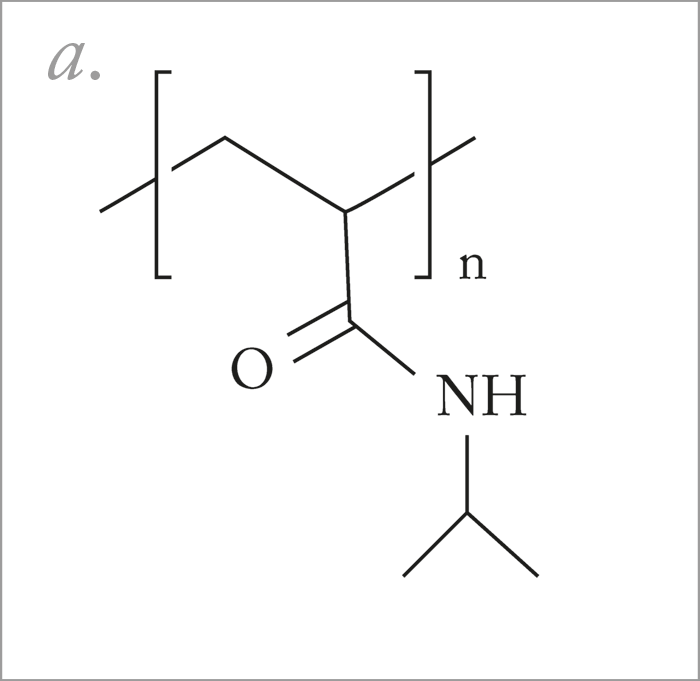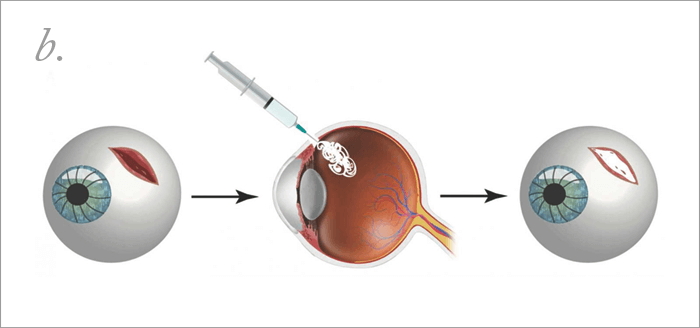
When a penetrating eye injury strikes, there is a need for speed. But what happens when the patient is in the middle of nowhere, with no access to emergency treatment? In such situations, repairing the damage with sutures isn’t ideal: the procedure requires specialist training and risks infection... Enter poly(N-isopropylacrylamide) – or PNIPAM – a biostable ‘smart’ polymer with thermoresponsive properties (see Figure 1a). The hydrophilic properties of its amide group (–CONH–) mean that PNIPAM is soluble at low temperatures. But when the polymer is heated to 32°C, the hydrophobic (–CH(CH3)2) groups interact, resulting in the formation of a gel-like aggregate as water is released from the structure. Cooling the polymer returns it to a soluble state.

PNIPAM’s thermoresponsive and reversible solubility properties have made it a candidate for retinal implants (1). But in response to a plea from the US Department of Defense to provide a solution for sealing open globe injuries, researchers at the University of Southern California (USC) decided to fine-tune the polymer so that it could be used to seal ocular injuries (2). “Since the initial hydrogel’s transition temperature was very close to the temperature of the human eye, we had to modify its properties to ensure that it would form a solid seal as soon as the gel was applied to the eye,” said the paper’s lead author, Niki Bayat (3). By co-polymerizing PNIPAM with N-tert-butylacrylamide or butylacrylate monomers, the team was able to optimize the formulation, as well as develop a custom injection tool that cools the sealant for application. The team demonstrated successful sealing of in vitro and in vivo models of ocular trauma (incision wounds in pig and rabbit, respectively): they found that the hydrogel was highly adhesive, could maintain pressures of up to 72 mmHg and prevent hypotony for 72 hours, and was biocompatible beyond the intended use period (3). Conveniently, the sealant can later be easily removed through application of cold water. Beyond the battlefield, the team envisages that the system could also be useful for sealing eye injuries following mass casualty-related trauma. “First responders at a mass casualty incident could deploy the hydrogel while patients wait for their injuries to be completely repaired by an ocular surgeon in appropriate microsurgical facilities,” said John Whalen III, corresponding author. “It could also be useful in ERs in rural areas where there isn’t an eye center with such capabilities nearby” (2).
References
- M Tunc et al., “Reversible thermosensitive glue for retinal implants”, Retina, 27, 938–942 (2007). PMID: 17891020. Erica Rheinschild. “USC News: A new portable gel that could save an injured eye”. Available at: http://bit.ly/EyeSeal. Accessed: January 2, 2018. N Bayat et al., “A reversible thermoresponsive sealant for temporary closure of ocular trauma”, Sci Transl Med, 9 (2017). PMID: 29212712.
